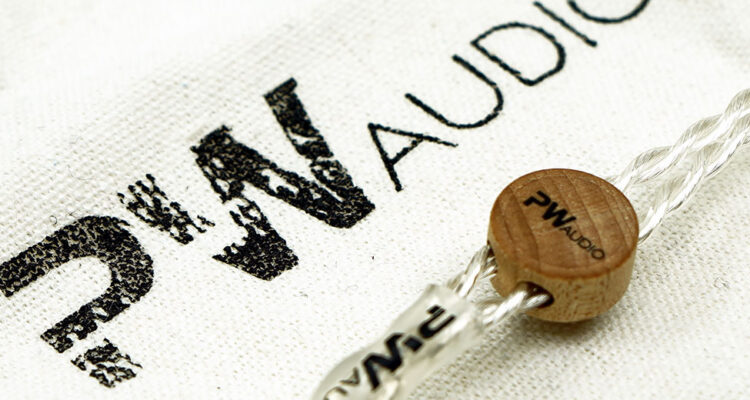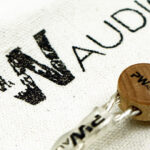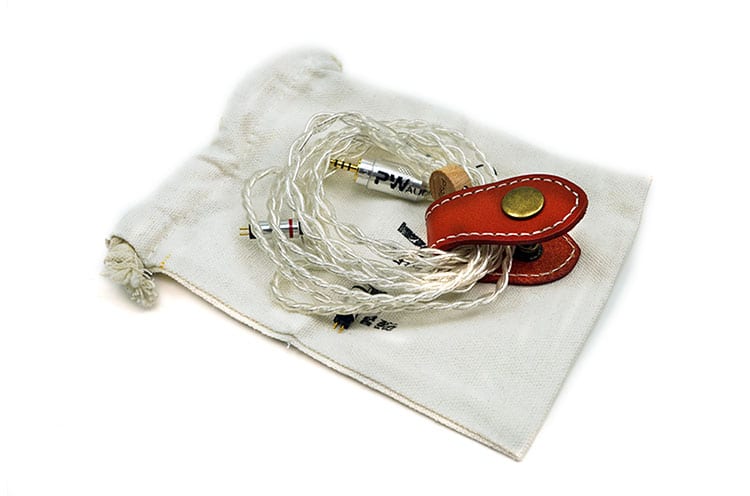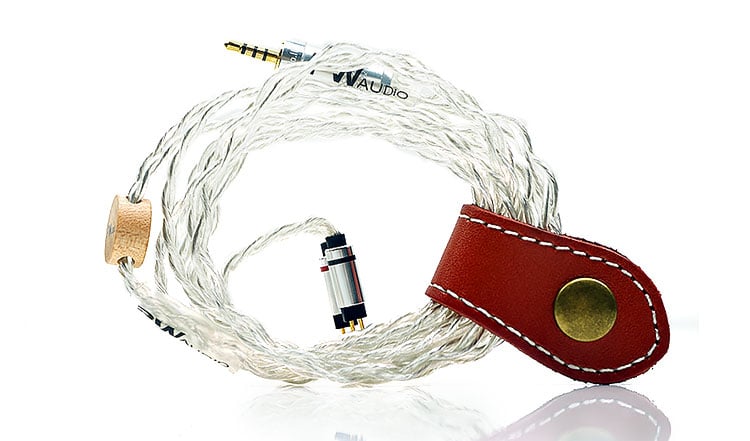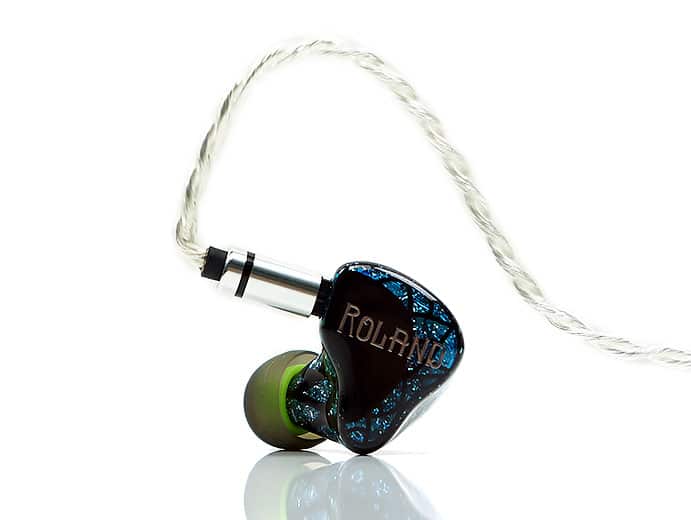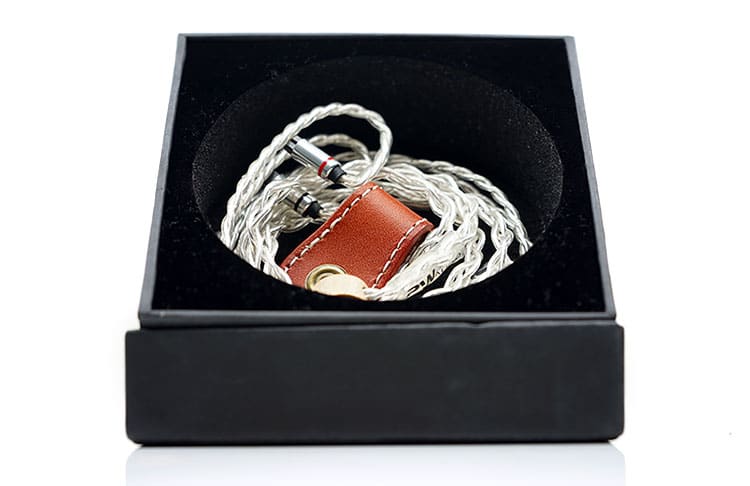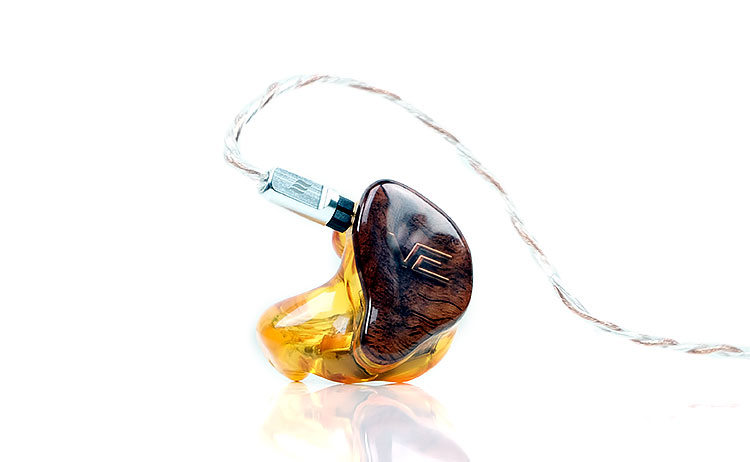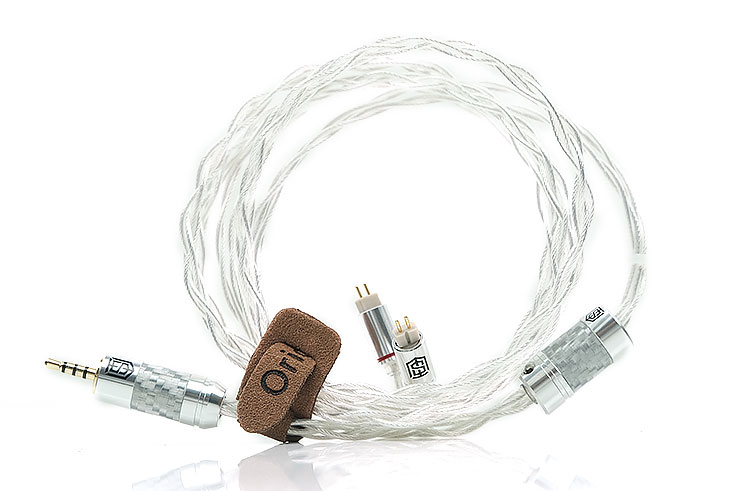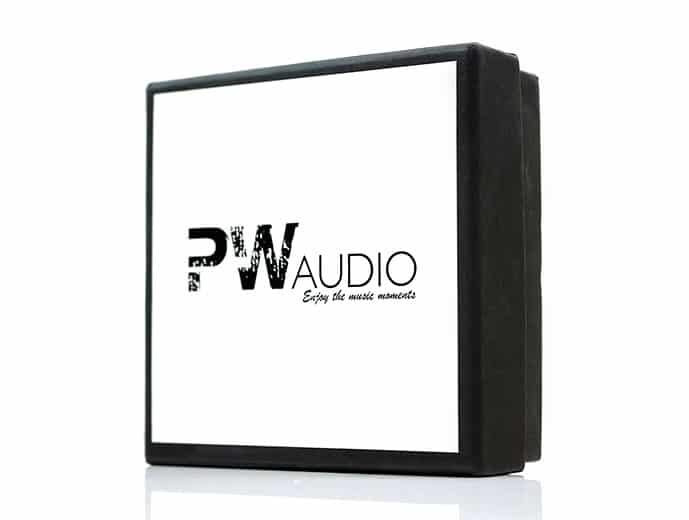The PW Audio No 10 is a brand new 24AWG 4-conductor fiber core 1.2m IEM cable created to celebrate the company’s 10th anniversary. It is priced at HKD$1480
Disclaimer: This is a sample sent to us in exchange for our honest opinion. We thank PW Audio for this opportunity.
To learn more about the cables we have reviewed on Headfonics you can click here.
Please note this review follows our current scoring criteria. You can read more about this here.
A caveat to our readers, there is a very advanced retail unit and at the current time of writing, I do not know the exact composition of the wire and its geometry, for example, Litz, UP-OCC, etc. Once the information is disclosed we will update this review.
That also includes the price which we are told will be very competitive and in the same ballpark as their original No 5 cable which is around HKD$1480.
In the meantime, we will have fun guessing the composition based on what we hear and see and how it compares to other cables in a similar pricing ballpark. Note, that we do not have the No 5 here to compare. Perhaps that one deserves its own review if we manage to get our hands on it and then we can do a comparison.
PW Audio
This is our first PW Audio product review so it makes sense to do a quick intro on who they are. The PW stands for Peter Wong, who is the owner and ‘cable cook’ at PW Audio which is a small boutique cable firm located in Hong Kong.
Around 5 years ago they released a well-received anniversary cable celebrating the company’s 5th anniversary. It was unsurprisingly called No 5. Now we are in the 10th year and Peter has decided to once again release a cable to commemorate this new anniversary and guess what the name? Yup, the No 10.
Tech Inside
The No 10 is a bigger wire than the No 5 comprising of a 4-core 24AWG thickness compared to the original’s 26AWG. The gauge is thicker than your typical mid-fi variants you get at this price point and it is built with a fiber core so that could well be a Litz build.
The size of each individual wire at 24AWG which is 0.511mm diameter and 49.7 turns of wire. This is 20% bigger physically than a 26AWG wire and around 30% more turns of wire. The 4-wire configuration should, in theory, give a better performance in terms of dynamic range and lower resistance than smaller gauges.
We do not yet know the wire material but PW Audio has used a PVC translucent jacket so the wire is naked to the physical eye. The only problem with the obvious silver color is that is not always automatically a silver wire, it could well be an SPC silver-plated wire.
The use of a translucent jacket and silver-colored wire would also reinforce my feeling this is a Litz bundle. Litz is resistant to oxidization or “going green’ and is something PW Audio would want to avoid.
Design
Because of the 24AWG wire, the No 10 is a slightly thicker cable design but not on the level of 8-wire builds such as the EA Ares II 8-wire or the OC Studio Orpheus MK5.
However, if you are coming from a Saladin 4-wire it is definitely on the bigger and heavier side. The use of the translucent PVC jacket means you get a ton of silver shimmer from the wire shining through.
PW Audio has been careful to match the tone with complementary silver parts. These include a proprietary jack, clearly marked L/R connector barrels as well as a lightly grained small circular wood chin-cinch.
The finishing is a transparent heat shrink wrap which I am not a huge fan of but it does add some excellent strain relief and doesn’t overly distract.
That same heat shrink is branded and used for the splitter, not unlike the PW Audio flash cable we have here. This is also pretty much the same finishing as the No 5 heat shrink splitter. I suspect this may be a cost factor in ditching the more attractive angular metal barrels of the more expensive Vanquish series.
The braiding is reasonably tight on the No 10 considering this is a 24AWG wire. The larger gauge means it is not quite as short on the braiding overthrow as 26AWG alternatives because of its relative thickness making it a touch harder to bend on a tighter rail without it breaking from stress.
Handling & Noise
For a 24AWG cable, the No 10 is very quiet indeed, and honestly, the weight and balance are just right for me. If you are tapping above the splitter the lack of memory wire might give you a bit more microphonics but this is tempered by the enhanced comfort level by not having memory wire dig into the back of your ear.
The handling is very nice also. It is not as deadened as the top-tier cables so from time to time you might see the odd kink in the braiding shape. However, the No 10 tends to straighten out after a few minutes of use.
The lack of heavy splitter in the middle and woody chin cinch shaves a lot of downwards pressure and weight from the cable and these jacks are not the heaviest I have ever handled.
Terminations
Now our sample comes with a 2-pin 0.78mm tellurium copper pin and chrome alloy connector and 2.5mm TRRS proprietary jack system.
However, I am presuming once this hits the retail shelf you will have a wide range of termination options. Options should include 3.5mm, 2.5mm TRRS, and 4.4mm for the jack. For the connectors, you can pick 2-pin, MMCX, Fitear, qdc reverse, JH Audio, and IPX.
Accessories & Packaging
The No 10 has a fairly simple package and is consistent with the majority of mid-fi PW Audio creations. You get a small branded cardboard square box with a circular foam cut out inside holding the cable.
The accessories include a silicone drier and the typical off-white PW Audio drawstring carry bag. You also get a clip-on tanned leather cable organizer with white stitching.
Sound Impressions
Impressions were done using Lotoo PAW Gold Touch, HiBy R3 Pro, 64 Audio’s tia Trio, A18, and Hum’s Dolores.
Summary
The No 10 will deliver a smooth and full-bodied presentation and since it is a 24AWG wire the dynamic range is excellent, certainly superior to some competing 26AWG cables.
The No 10 will murder those stock 4-wire OCC Plastic One type variants sounding way more vivid, less compressed, and delivering a richer tone across the board. However, even good quality 4-wire 26AWG cables such as the Satin Audio Medusa and to a lesser extent the Grandiso from EA will sound just a shade diminished or more neutral in comparison.
What will strike you right away is the quality of the low-end performance with dynamic driver hybrids. It is not as outright punchy as OC Studio’s 8-wire copper Orpheus MK5 but it has an excellent body and a confident level of solidity to really make quality dynamic driver IEMs such as the Campfire Audio Solaris sound ‘big’.
With most of the monitors we tested below, the No 10 sounded articulate with excellent headroom and a fairly vivid midrange presentation. At the same time, the No 10 does not sound too forceful with treble, in fact, it is fairly wet which I tend to prefer with the likes of the Solaris and something like the 64 Audio A18.
Timbre
The No 10’s timbral balance is a little more on the even-harmonic side for me. You get a slightly rounded overtone to midrange instrumental timbre compared to the cleaner sound of something like the Saladin or EA’s lighter-sounding Grandioso.
This is not a lean, bright, or analytical-sounding cable. Instruments sound full, rich, and powerful with the No 10 and vocals sound big and smooth with little in the way of sibilance.
Treble is a little on the relaxed side but it is buttery smooth and nicely weighted. This is an excellent cable for dynamic driver depth and a natural-sounding performer on dark synth wave songs.
I have been using the Solaris and the No 10 combo with the Lotoo PAW Gold Touch on some Toxic Avenger tracks because of the beautiful timbral bloom they deliver on their mid-bass synth sounds.
It is a very potent matchup, to be honest with you. The echoey bass synth layering sounds really rich without being too forceful with the No 10 and Solaris combo. “Phat and languid” to a point but with excellent detail.
Matchability
Given its reasonably liquid-like smooth overtone, I tended to match the No 10 with an otherwise neutral or clean monitor or a dynamic driver low-end that I wanted to flesh out a bit more.
Neutral Tweaks
I really enjoyed how the No 10 teased out a fuller sound and some enhanced low-end quantity on the neutral IEMs without being overly physical at the same time. The additional richness and warmth also played well with monitors that perhaps have a lighter timbre in their mids or could do so with more solidity.
The 64 Audio A18 is a classic example of such an ideal pairing with the No 10. The upgrade in dynamic range from the stock cable is palatable but more than that the timbre, which I always feel is a bit on the lean side is much juicier with the No 10 pairing.
It does not slam as hard as some 8-wire copper cables such as the OC Studio Orpheus MK5 but it is satisfyingly smooth and full-bodied with the A18.
Weighty Enhancement
Whilst I shied away from the Satin Studio Medusa when paired with the Campfire Audio Solaris due to the lack of low-end punch compared to its stock SuperLitz wire, this was not the case with the No 10. This was a weighty yet smooth pairing with very little in the way of brittle or lean treble overtones.
Whilst the SuperLitz does an excellent job of competing with the No 10 for low-end impact and sub-bass weight, it can’t inject the same level of separation and headroom from the mids onwards that the No 10 offers.
The No 10/Solaris pairing has a much better mids and treble performance for me than the SuperLitz.
Select Comparisons
Effect Audio Vogue Grandioso
$199
Technical
The Grandioso is the flagship cable of EA’s new entry-to-mid-level Vogue range launched a few months ago. Cables start at $99 with the Maestro and up to $199 with the Grandioso. The Grandioso is described by Effect Audio as a hybrid of silver and copper, which is not to be confused with silver-plated copper or SPC.
The Grandioso is a smaller wire than the No 10 at 26AWG compared to 24AWG. We do know that the Grandioso is a UP-OCC multi-stranded Litz wire, however, the 4 is split into two pure copper and 2 pure silver. We are presuming at this stage that the No 10 is a single blend 4-wire of either pure silver or SPC.
Both use PVC jackets but because of the smaller gauge wire, the Grandioso is a tighter braid throw and generally a much smaller and lighter cable. You can see a big size difference side by side with the Grandioso resembling the Vanquish Saladin size more.
Both have proprietary jacks with the Grandioso EA version much smaller and lighter. Connectors are also reasonably similar though the tellurium copper seems a bit tougher on the No 10 than the softer Grandioso pins. The Grandioso uses a small but tidy aluminum splitter compared to the bulkier branded heat shrink of the No 10.
Performance
The No 10 has a bit more dynamic range as you might expect from a good quality 24AWG wire compared to the 26AWG Grandioso.
The sound is a little fuller on the No 10, especially the low-end up to the lower-mids. On the 64 Audio A18, I hear a bit more warmth and solidity in the instrumental timbre compared to the slightly cleaner and more neutral overtone of the Grandioso/A18 pairing.
You do hear a little more treble body and a slightly smoother sound on the No 10. The Grandioso has a bit more sparkle but the body is on the neutral side and not quite as textured or as rich sounding as the No 10.
Because of the more neutral overtone of the Grandioso low-end and instrumental timbre, you could perceive it as having a slighter better instrumental separation. However, you need to temper this with the No 10’s better ability to tease out depth from big-sounding monitors like the A18.
In summary, a smoother more powerful-sounding cable pairing from the No 10 and a neutral cleaner overtone from the Grandioso.
Satin Audio Medusa
$209.90
Technical
The Medusa is the flagship of Satin Audio’s ‘Monster’ IEM cable series and with a bang for buck pricing of $209.90 considering this is a pure 6/7N OCC silver cable.
The exact specification is a smaller gauge at 26AWG compared to the No 10’s 24AWG so there is less of and will be slightly more resistant. The Medusa is also a type 4 Litz wire and we have to presume the No 10 is also a Litz build given the No 5 was also and silvery finishes need Litz to stave off green oxidization.
A smaller gauge means a small cable and the Medusa is the lighter smaller form factor of the two side by side. However, the braiding technique on the no 10 is slightly tighter even though the thicker wire might make it a trickier build. The No 10 also has a nicer silvery shimmer though, to be honest, the overall looks are very similar.
I do love the silvery chrome and carbon fiber print barrels used by Satin on the Medusa. I do wish the No 10 had a similar finish for the splitter rather than the simpler and cheaper heat shrink. Having said that, the Medusa barrels are much heavier and it has no chin cinch which a lot of people prefer.
Both have excellent low microphonics performance but I prefer the handling of the larger No 10. It has less of a flyaway nature with the PVC jacket and tighter braiding.
Performance
You feel the difference in the dynamic range between the two cables right away which is unsurprising given the difference in gauge.
The tonal balance is also a bit different. I find both quite smooth and the Medusa is a bit more low-end weighted and warmer than something like the EA Ares II 4-wire.
However, the No 10 is even richer and thicker with a more vivid presentation and enhanced levels of sub-bass to mid-bass quantity. Vocals also had a bit more texture and focus and were not as neutral to my ear as the Medusa.
The Medusa also has a touch more lower-treble presence for me but this is really due to the more neutral-sounding low-end compared to the No 10. You might find the timbre on the Medusa to be more neutral and a shade cleaner as a result.
Overall, the No 10 is a thicker, richer-sounding pairing with the A18 and Dolores. It has a bit more low-end power, a bigger sounding vocal, and generally a more vivid sound. The Medusa is also quite smooth but more neutral, with less low-end weight and a bit more lower-treble focus.
OC Studio Orpheus MK5
Approx. $250
Technical
The Orpheus MK5 was my bang for buck winner for 2018 and for good reason. For the price, you are getting an 8-wire 24AWG Cryo-treated UPOCC single crystal pure copper. That is the same gauge as the No 10 only double the conductor count of the sample we have for a similar price.
Since our review, OC Studio has upgraded to a Litz version of the Mk5 to prevent oxidization though our sample here still looks very fresh and has not gone green. We expect the No 10 to stay silvery in the long run also.
Side by side, the Orpheus Mk5 is much thicker and heavier than the No 10. This is a copper cable with a translucent jacket so it has a much darker visual. The barrels and connectors are also darker and in the case of the splitter and jack barrel, heavier also than the No 10.
This is a beast of a cable and you will feel it when handling and around your ear compared to the lightish No 10. Microphonics are just a shade higher due to having more surface area but nothing really noteworthy. Both cables have no real memory retention either.
Performance
Both are 24AWG but we are moving from 4-wire to 8-wire and there is a significant difference in the presentation focus between the two when paired to the 64 Audio A18 and Hum’s Dolores. We are also comparing a pure copper tone to what we think is silver or SPC which has its own core performance overtones.
The Orpheus MK5 has a bit more low-end impact and treble sparkle but slightly less midbass to midrange warmth and presence. I would say the Orpheus MK5 also has a bit more dynamic range, particularly on the low-end performance which is very open and responsive sounding.
What the No 10 offers is enhanced smoothness and warmth in the midrange and treble. Whilst I would say the No 10 is warmer and fuller-sounding compared to the Grandioso, it is more linear and balanced compared to the slam of the Orpheus MK5’s low-end and top-end sparkle.
Overall, the Orpheus MK5 is fun sounding with a more sub-bass slam and treble sparkle whereas the No 10 is smoother and the more linear/balanced of the two with a bit more mids focus.
Our Verdict
I like this cable a lot. It is deliciously smooth with a nice low-end weighting that adds some excellent power and body to instruments. Vocals have plenty of texture and a slightly liquid-like quality with a nice treble balance. If you enjoy a cable that fleshes out the dynamic range and you need plenty of body, the No 10 is a very nice choice indeed.
I do not yet know the price or the wire material for that matter. However, the No 10 at HKD$1480 is a bit of a bargain for an excellent performing 24AWG wire.
To date, the Satin Audio Medusa has been my ‘bang for buck’ recommendation for 2019. The No 10 is easily in the pack for 2020 alongside them as a fantastic performer and uniquely different. If you get a chance it is well worth a listen.
PW Audio No 10 Specifications
- Jacket Material: PVC
- Conductor Material: TBC
- Gauge: 24AWG with fiber in the core
- Conductor count: 4

